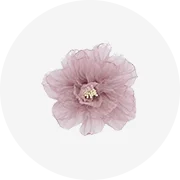Phổ biến trong ngành của bạn






Logo tùy chỉnh vỏ cứng Eva Túi xách tay chống áp lực bao bì hộp không thấm nước và chống thả lưu trữ
2,59 US$ - 3,99 US$
Đơn hàng tối thiểu: 50 Túi





Du Lịch Ngoài Trời Mini Xách Tay Hộp Eva chăm sóc sức khỏe thiết bị nhà Y Tế Du lịch Viện trợ đầu tiên Kit Túi Y Tế trường hợp lưu trữ khẩn cấp
0,85 US$ - 1,20 US$
Đơn hàng tối thiểu: 5 Cái
Vận chuyển mỗi chiếc: 6,05 US$







Chất lượng cao kiểm soát ô nhiễm không khí xung máy bay phản lực loại túi bụi Collector
3.800,00 US$
Đơn hàng tối thiểu: 1 Bộ







Tái Sử Dụng Ma Cà Rồng IV Túi Máu/Pvc Vô Trùng Uống Túi
0,40 US$ - 0,68 US$
Đơn hàng tối thiểu: 50 Cái







Phụ Kiện Mạch Thở Mủ Y Tế Màu Xanh Và Túi Thở Gây Mê 500Ml Không Chứa Latex
Sẵn sàng vận chuyển
380,00 US$ - 418,80 US$
Đơn hàng tối thiểu: 1 Hộp
Vận chuyển mỗi chiếc: 46,72 US$






Ba Lô Sơ Cứu Với 11 Chiếc Túi Mô-đun Túi Đựng Đồ Thiết Kế Để Sơ Cứu Ba Lô Chấn Thương Lớn
16,90 US$ - 18,90 US$
Đơn hàng tối thiểu: 500 Cái






Phụ Kiện Dùng Một Lần Y Tế PVC Nồng Độ Cao Màu Xanh Dành Cho Người Lớn Mặt Nạ Oxy Với Rebreathing Túi Để Máy Thở
0,40 US$ - 0,60 US$
Đơn hàng tối thiểu: 500 Cái






New arrivals tùy chỉnh thời trang EVA lưu trữ công cụ trường hợp đối với hetaru thở tự nhiên tập thể dục thiết bị lưu trữ túi
4,23 US$ - 4,98 US$
Đơn hàng tối thiểu: 500 Cái
Vận chuyển mỗi chiếc: 0,70 US$






Giá Thấp S M L Xl Pvc Y Tế Phẫu Thuật Dùng Một Lần Mặt Nạ Thở Oxy Mặt Nạ Oxy Với Ống
0,20 US$ - 0,30 US$
Đơn hàng tối thiểu: 5000 Cái












Ce & ISO13485 được phê duyệt konmed biểu tượng tùy chỉnh hỗ trợ thở phụ tùng Kit với đầy màu sắc cứng nhựa trường hợp CPR mặt lá chắn
1,35 US$ - 1,50 US$
Đơn hàng tối thiểu: 100 Cái
Các tìm kiếm liên quan:
thương mại túi thở siliconetúi thở miễn phí gây mê màu xanh lá câytúi thở dùng một lầntúi thở dùng một lần chất lượng caotúi thở 5ltúi thở lạinhà cung cấp túi thởtúi thở chất lượng caotúi thở ambutúi thở silicon tái sử dụngtúi thở silicone gây mêce phê duyệt túi thởtúi thở ốngthương mại túi thở siliconetúi thở y tế không khí






Tùy chỉnh mềm hơi thở Giường Bao gồm nệm không thấm nước bảo vệ
0,18 US$ - 0,30 US$
Đơn hàng tối thiểu: 10000 Cái






Bán Buôn Dùng Một Lần Cpr Lá Chắn Miệng Để Miệng Resuscitationquick Hô Hấp Nhân Tạo Pocket Cpr Thở Mặt Nạ Keychain
0,39 US$ - 0,48 US$
Đơn hàng tối thiểu: 100 Cái






Dùng Một Lần PVC Trẻ Em Người Lớn Mặt Nạ Oxy, Mặt Nạ Thở Oxy
0,30 US$ - 0,35 US$
Đơn hàng tối thiểu: 5000 Cái






Mặt Nạ Oxy Không Thở 1000Ml Cho Người Lớn Mặt Nạ Oxy Có Túi Chứa Mặt Nạ Túi Oxy Thở
0,20 US$ - 0,45 US$
Đơn hàng tối thiểu: 5000 Cái





Nhỏ đầu tiên Viện trợ đào tạo mặt nạ khẩn cấp Kit túi Viện trợ đầu tiên Kit Cung cấp biểu tượng tùy chỉnh in ấn y tế Kit CPR mặt nạ Keyring
1,10 US$ - 1,50 US$
Đơn hàng tối thiểu: 100 Cái
Vận chuyển mỗi chiếc: 20,20 US$






Ningbo Mặt Nạ Dưỡng Khí Đơn Mặt Xoay Mũi Tập Thể Dục Ngủ Thường Xuyên Thở Tập Trung Cao
0,20 US$ - 0,30 US$
Đơn hàng tối thiểu: 5000 Cái






CPR Viện trợ đầu tiên Kit túi khẩn cấp khác chăm sóc vết thương gấp bệnh viện CPR mặt lá chắn y tế cung cấp chữ thập Đỏ Cứu Hộ Khẩn Cấp
1,10 US$ - 1,50 US$
Đơn hàng tối thiểu: 100 Cái
Vận chuyển mỗi chiếc: 20,20 US$






Medic Thiết Bị Thở Dùng Một Lần Cho Trẻ Sơ Sinh Van Hồi Sức Bộ PVC Cho Trẻ Em Trẻ Em Túi Hồi Sức Bằng Tay Oxy
3,00 US$ - 8,00 US$
Đơn hàng tối thiểu: 1 Cái






2024 mùa hè sinh thái Túi bãi biển Weekender Phụ Nữ Vải Du Lịch Túi vải thô lớn qua đêm mua sắm vệ sinh cá nhân mẹ Tote Túi
Sẵn sàng vận chuyển
4,49 US$ - 5,49 US$
Đơn hàng tối thiểu: 60 Cái
Vận chuyển mỗi chiếc: 4,13 US$






Breath Holes Túi Đóng Gói Cho Khoai Tây Óc Chó Polypropylene Dệt Raffia Bao Tải 10Kg Hạt Mè Popcorn Đậu Lăng 50Kg Túi Pp
0,05 US$ - 0,50 US$
Đơn hàng tối thiểu: 10000 Cái






Bộ Sơ Cứu Du Lịch Mini Màu Đỏ Nhãn Logo Theo Yêu Cầu 2023 Bộ Sơ Cứu Mini Trong Túi Nylon
Sẵn sàng vận chuyển
1,45 US$ - 1,80 US$
Đơn hàng tối thiểu: 500 Cái
Vận chuyển mỗi chiếc: 0,29 US$






Chống Nước Chống Trầy Xước Unisex Ba Lô Văn Phòng Kinh Doanh Túi Máy Tính Xách Tay
6,50 US$ - 7,00 US$
Đơn hàng tối thiểu: 500 Cái






Bán số lượng lớn OEM nhựa một cách dùng một lần thở mặt hồi sức lá chắn CPR mặt nạ màu Đỏ màu xanh đen dệt Túi biểu tượng tùy chỉnh
0,39 US$ - 0,45 US$
Đơn hàng tối thiểu: 200 Cái
Vận chuyển mỗi chiếc: 20,10 US$






Y Tế Kit Di Động Thiết Bị Y Tế Aerosol Lưu Trữ Túi Hộ Gia Đình Máy Thở Y Học Túi Du Lịch
2,61 US$ - 2,87 US$
Đơn hàng tối thiểu: 500 Cái






Túi Đứng Chống Mùi Trẻ Em Có Khóa Kéo Logo Tùy Chỉnh In Kỹ Thuật Số Túi Khóa Kéo Mylar Túi Đóng Gói Thực Phẩm
0,03 US$ - 0,05 US$
Đơn hàng tối thiểu: 1000 Cái






Bán Buôn MOQ Thấp 500 Cái In Kỹ Thuật Số Mylar Ba Lô Zip Khóa Túi 3.5 Bao Bì Thực Phẩm Túi Cổ Phiếu Lớn
Sẵn sàng vận chuyển
0,04 US$
Đơn hàng tối thiểu: 100 Cái
Vận chuyển mỗi chiếc: 0,52 US$






Kết nối đen mẫu không khí cao su gây mê túi thở cho máy gây mê
0,62 US$ - 0,82 US$
Đơn hàng tối thiểu: 1000 Cái






In kỹ thuật số logo tùy chỉnh khóa zip mờ trẻ em mùi bằng chứng đứng lên túi Mylar dây kéo túi bao bì thực phẩm
0,03 US$
Đơn hàng tối thiểu: 2 Cái






Oem Thiết Bị Y Tế Bệnh Viện Siliconepvc Đóng Thở Hỗ Trợ Mạch
2,90 US$ - 4,50 US$
Đơn hàng tối thiểu: 1000 Cái






Móc chìa khóa đào tạo Quà Tặng CPR thở mặt nạ mặt lá chắn CE
0,50 US$ - 2,00 US$
Đơn hàng tối thiểu: 20 Cái






Chất lượng cao 180gsm màu xanh không thấm nước ánh sáng PE bạt với hơi thở khả năng để đóng gói và ngoài trời bao gồm
2,00 US$ - 5,00 US$
Đơn hàng tối thiểu: 50000 Cái






Bán Sỉ Thiết Bị Thở Khẩn Cấp Y Tế Nhỏ Theo Yêu Cầu Mặt Nạ Cứu Sinh Túi Hồi Sức CPR Móc Chìa Khóa Mặt Nạ CPR
Sẵn sàng vận chuyển
0,29 US$ - 0,34 US$
Đơn hàng tối thiểu: 100 Cái
Vận chuyển mỗi chiếc: 0,21 US$






Thở Không Khí Nữ Chó Tã Tã Cho Chó Cưng
Sẵn sàng vận chuyển
1,25 US$ - 2,64 US$
Đơn hàng tối thiểu: 50 Túi
Vận chuyển mỗi chiếc: 9,36 US$






Guangmin khẩn cấp thoát thở thiết bị PVC/PU lót Áo Khoác Đôi thiết yếu chữa cháy Kit thiết bị an toàn cháy
0,32 US$ - 0,88 US$
Đơn hàng tối thiểu: 1000 Mét
Vận chuyển mỗi chiếc: 1,79 US$






Cứu hộ thở mặt nạ Cứu Hộ Khẩn cấp CPR Túi hồi sức cứu hộ mặt nạ
1,12 US$ - 1,15 US$
Đơn hàng tối thiểu: 300 Gói






2020 Khuyến Mãi CPR Hồi Sức Đào Tạo Cấp Cứu Khẩn Cấp Cứu Hộ Mặt Nạ Thở Bộ Chuyển Đổi Đào Tạo CPR Van CPR Barrier
Sẵn sàng vận chuyển
0,11 US$ - 0,14 US$
Đơn hàng tối thiểu: 1000 Cái
Vận chuyển mỗi chiếc: 0,05 US$






Ba Lô Đi Học In Thời Trang Theo Yêu Cầu Giảm Giá Mạnh 2021 Túi Đi Học Cho Trẻ Em Và Bé Gái Ba Lô Trẻ Em
2,68 US$ - 4,12 US$
Đơn hàng tối thiểu: 100 Cái






CPR Kit Viện trợ đầu tiên y tế Kit CPR một cách van bệnh viện sức khỏe Kit hơi thở huấn luyện viên cứng nhựa đầu tiên Viện trợ đào tạo hộp nhựa
1,35 US$ - 1,45 US$
Đơn hàng tối thiểu: 100 Cái
Các danh mục hàng đầu
Giới thiệu về túi thở màu xanh
Alibaba.com cung cấp các sản phẩm 2242 túi thở màu xanh. Có rất nhiều túi thở màu xanh lựa chọn dành cho bạn, chẳng hạn như pvc, pp, và nhựa. Bạn cũng có thể chọn từ class i, class ii túi thở màu xanh. Cũng như từ eos túi thở màu xanh. Và bất kể túi thở màu xanh là iso.




























